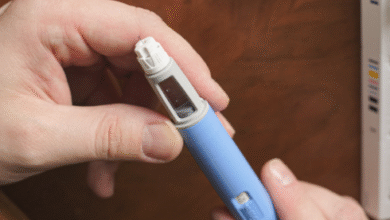Dental implants are widely regarded as the gold-standard solution for replacing missing teeth.

They restore function, preserve jawbone health, and deliver a natural appearance. Before an implant can be placed, however, your jawbone must have enough volume and density to support it. Two common preparatory procedures—bone grafting and sinus lift surgery—help create that stable foundation when bone loss or anatomical limitations pose a challenge.
If you have been told you might need additional surgical steps before receiving implants, do not be alarmed. Bone grafts and sinus lifts are routine, predictable, and highly successful when performed by an experienced team such as Stroud dentist Innisfil. In this blog post, we will explain why these treatments may be necessary, what they involve, and how we determine whether you are a candidate.
Why Jawbone Quality Matters for Implants
Every dental implant relies on osseointegration, a biological process in which the titanium post fuses with surrounding bone. Adequate bone volume ensures that the implant
Remains stable during chewing forces
Integrates correctly for long-term success
Maintains the shape of your gums and facial profile
When bone is thin or insufficient, implants can loosen or even fail. Common causes of bone loss include:
Tooth extractions without timely replacement
Periodontal (gum) disease
Long-term denture use
Trauma or infection
Natural anatomy, particularly in the upper-posterior jaw where sinuses reside
Bone Grafting Explained
A bone graft adds or builds up bone in areas where it has diminished. Grafts typically use one of four material sources:
Autograft: Bone taken from another area of your own body, often the chin or hip
Allograft: Processed human donor bone
Xenograft: Bone from a bovine source, thoroughly sterilized
Alloplastic graft: Biocompatible synthetic material
How Bone Grafting Works
Assessment
At Stroud Dental we begin with a comprehensive evaluation using digital X-rays and cone-beam CT imaging to measure bone thickness and identify the graft location.
Graft Placement
The dentist or oral surgeon creates a small incision in the gum to expose the jawbone. The grafting material is then packed into the deficient area. A membrane may be placed to protect the graft, and the gum tissue is sutured closed.
Healing Phase
Over the next three to six months your body fuses the graft to existing bone, gradually generating new bone cells in a process called guided bone regeneration.
Implant Placement
Once healed the area is strong enough for implant surgery. In some minor cases bone grafting and implant placement can occur in the same appointment.
When Bone Grafting Is Needed
Long-term tooth loss has reduced ridge height or width
Thin ridge anatomy following extraction
Periodontal disease has caused vertical bone defects
You are considering implant-supported dentures that require uniform bone support
Sinus Lift Surgery Explained
A sinus lift, also known as sinus augmentation, is a bone grafting procedure specific to the posterior upper jaw. Behind your cheeks lie maxillary sinuses, air-filled cavities lined with delicate membrane. After upper-molar extractions, the sinus floor often drifts downward, leaving little bone between the mouth and the sinus cavity. Placing an implant into this thin bone risks perforating the sinus membrane and destabilizing the implant. A sinus lift solves this problem by raising the sinus floor and adding bone beneath it.
How a Sinus Lift Works
Imaging and Planning
We assess sinus size, membrane thickness, and available bone height with three-dimensional CT scans.
Creating a Lateral Window
Under local anesthesia, the surgeon opens a small window in the side wall of the upper jaw near the molar region.
Lifting the Membrane
The sinus membrane is carefully lifted upward, creating a pocket between membrane and bone.
Placing the Bone Graft
Grafting material is packed into this new space. The goal is to add several millimeters of bone height to support implant length.
Closing and Healing
The gum tissue is sutured. Healing usually takes six to nine months, after which implants can be placed.
When a Sinus Lift Is Needed
Bone height beneath the sinus is less than 5–6 millimeters
Large sinus cavities from natural anatomy
Significant resorption following extraction of upper molars or premolars
How Stroud Dental Determines Your Needs
Not every patient requires bone grafting or a sinus lift. At Stroud Dental our evaluation includes:
Cone-Beam CT Scan
Provides detailed 3-D views of bone thickness, nerve pathways, and sinus anatomy.
Clinical Examination
Our dentist checks gum health, bite alignment, and adjacent teeth stability.
Medical and Dental History Review
Conditions such as smoking, diabetes, or sinus issues can influence treatment planning.
Treatment Discussion
We explain findings, outline grafting options, estimate timelines, and present costs so you have clear expectations before choosing to proceed.
Recovery and Aftercare
Both bone grafts and sinus lifts have straightforward recovery periods:
Mild swelling or bruising for several days
Over-the-counter pain relievers typically manage discomfort
Soft foods and gentle mouth rinses promote healing
Avoiding smoking, blowing the nose, or heavy lifting helps maintain graft stability
Most patients return to normal routines within a week. We schedule follow-up visits to monitor integration and begin planning your implant stage.
Frequently Asked Questions
Can implants be placed at the same time as a graft or sinus lift?
Small grafts can sometimes be combined with implant insertion. Larger sinus lifts almost always require a separate healing phase.
Is bone grafting safe?
Yes. Modern graft materials are extensively tested for safety and biocompatibility.
Will insurance cover these procedures?
Some plans partially cover grafting when considered medically necessary. Our team assists with predeterminations and financing options.
Does grafting hurt?
Most patients experience only mild post-operative soreness, controlled by prescribed or over-the-counter medication.




